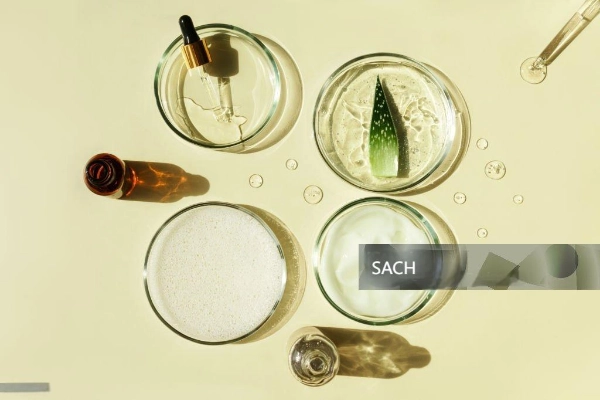- This topic is empty.
-
AuthorPosts
-
09/05/2025 at 11:51 #86146
In the ever-evolving landscape of skincare and cosmetics, the integration of natural bioactive compounds has gained significant momentum, with consumers increasingly seeking products that offer both efficacy and safety. In this blog post, SACH, a high purity cosmetic ingredients manufacturer, will share the application of natural antioxidant ergothioneine for skin in cosmetics.
Synthetic Methods of Natural Antioxidant Ergothioneine (CAS No.: 497-30-3)
1. Chemical Synthesis
The chemical synthesis of ergothioneine, particularly levoergotamine sulfide, faces significant challenges. Several existing synthesis methods have failed to achieve satisfactory yields due to partial or complete racemization. One major difficulty lies in the preparation of the key raw material, 2-mercaptoimidazole. The acidic nature of the alpha carbon in this compound makes the reaction highly susceptible to racemization. Additionally, chemical synthesis is hindered by concerns over product safety, the high cost of synthesis materials, and the resulting high product prices. These factors severely limit the practical application of ergothioneine synthesized through chemical means.
2. Natural Extraction
Ergothioneine can be extracted from natural sources such as the fruiting bodies of edible fungi, pig blood, animal tissues, ergot, and grains. However, the concentration of ergothioneine in these raw materials is typically very low. Moreover, these sources often contain high levels of impurities and may have drug residues, which further complicate the extraction process. The high cost associated with extraction also restricts the large-scale application of ergothioneine obtained through this method, making it unsuitable for industrial production.
3. Biological Fermentation Synthesis
The biosynthesis of ergothioneine using deep fermentation technology with mushroom mycelium represents the most promising and mainstream approach for low-cost, large-scale production. By employing metabolic regulation and other fermentation process control methods, the yield of ergothioneine can be significantly improved, and production costs can be effectively reduced. More importantly, this method ensures the safety of the final product and greatly expands the potential application areas of ergothioneine.

Oxidative Stress and Skin Aging
The skin, being the outermost barrier of the human body, is continuously exposed to exogenous oxidative stressors such as ultraviolet (UV) radiation, pollution, and chemicals. These stressors lead to the generation of reactive oxygen species (ROS), which are unstable molecules that damage cellular components including lipids, proteins, and DNA.
Chronic oxidative stress accelerates the skin aging process, manifesting as:
– Wrinkle formation
– Hyperpigmentation
– Loss of elasticity
– Impaired barrier function
– Inflammation
To counteract these effects, antioxidants are incorporated into cosmetic formulations. However, many traditional antioxidants like vitamin C or E suffer from issues such as instability, poor skin penetration, or degradation under UV exposure. This is where ergothioneine offers a distinct advantage.
Role of Natural Antioxidant Ergothioneine for Skin in Cosmetics
1. Direct Scavenging of Reactive Oxygen and Nitrogen Species
Ergothioneine neutralizes a wide spectrum of ROS and reactive nitrogen species (RNS), including hydroxyl radicals, singlet oxygen, and peroxynitrite. Its redox potential allows it to persist in the reduced, active form longer than other antioxidants, making it more effective over time.
2. Chelation of Redox-Active Metals
Ergothioneine can chelate metal ions such as Fe²⁺ and Cu⁺, which catalyze the Fenton and Haber-Weiss reactions that generate ROS. By sequestering these ions, ergothioneine helps prevent the initiation of oxidative chain reactions.
3. Mitochondrial Protection
EGT accumulates in mitochondria, the primary site of cellular respiration and a major source of endogenous ROS. It protects mitochondrial DNA and enzymes from oxidative damage, preserving cellular energy metabolism and function—essential for skin vitality.
4. Anti-inflammatory Activity
Ergothioneine downregulates the expression of pro-inflammatory cytokines such as IL-6 and TNF-α. This makes it beneficial in mitigating inflammaging—the chronic, low-grade inflammation associated with aging.
5. Photoprotection
Studies have shown that ergothioneine reduces UV-induced damage in skin cells by absorbing UV-A rays and minimizing lipid peroxidation and DNA damage. It can complement or enhance the efficacy of sunscreens.
Formulation Considerations in Cosmetics
Incorporating ergothioneine into cosmetic formulations involves several formulation and stability factors:
– Solubility: Ergothioneine is water-soluble and thus ideal for aqueous-based serums, gels, and emulsions.
– Stability: It is stable over a wide pH range (5–8), heat-resistant, and does not easily oxidize in comparison to other thiol compounds like glutathione.
– Compatibility: Ergothioneine can be combined with other antioxidants (e.g., vitamin C, ferulic acid) or skin actives (e.g., niacinamide, hyaluronic acid) without adverse reactions.
– Delivery Systems: Encapsulation techniques such as liposomes, nanoparticles, or hydrogels can enhance its bioavailability, targeted delivery, and penetration into deeper skin layers.
Conclusion
Ergothioneine represents a next-generation antioxidant with unique transport, stability, and multifunctional capabilities that distinguish it from conventional agents. Its integration into cosmetics holds immense potential for protecting skin from oxidative stress, delaying visible signs of aging, and supporting overall skin resilience.
-
AuthorPosts
- You must be logged in to reply to this topic.